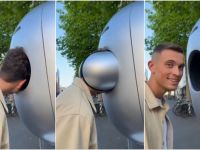Hey, remember Stranger Things?
It’s a weird question to ask about a show which uses 1980s nostalgia to work, but Netflix’s surprise hit—about pre-teens evading the clutches of mysterious men in black to find their missing friend—is a mish-mash of tropes and aesthetics from that period recreated with the flair and technological know-how of 2016. It knew when to flip clichés, and knew when to keep them.
Nobody’s saying Stranger Things was flawless. But it was, ironically enough, refreshing, a surprisingly sweet story threaded through a bleak, oppressive environment...a story about growing-up that dispenses with cynicism, though not pessimism. It largely earned it, too—even if it had to pretend a character or two’s deaths didn’t barbto do so.
Stranger Things 2 is dropping today. It looks bigger than its first season, more certain, and is based around a different dynamic.
If you need a reason to jump into the show, here are four.
1. By Using Pulpy Tropes with Good Ones, It’s Perfect Halloween Fare

Above: Plan 9 from Outer Space. We're alluding to Plan 9 from Outer Space. (Valiant Pictures)
Fans of Halloween like to pretend it’s all about good horror, and the younger generation still seems fixated on movies like The Nightmare Before Christmas.
But those of us who go full hog on Halloween also appreciate that it’s about bad horror—the ghoulish rise of Boris Karloff from his tomb, the plans of misguided aliens resurrecting zombies from the grave.
Stranger Things never goes that far, but it is pinned with genre tropes it never tries escaping. The backstory is essentially adapted from Stephen King’s Firestarter. Season 1’s big bad was a rich white guy with a shady past and government connections (plus a vaguely Silent Hill-like eldritch horror from another dimension); Season 2’s big baddy seems to be a cosmic spider.
Yet it functions like A-class horror, with the final episode being the stand-out—as it should be.
2. It is Full of Callbacks, but Isn’t Weighed Down by Them
This is something a lot of shows do badly.
Stranger Things is a show that benefits from nostalgia, and, early on (when the track “Kids” plays), benefits from it. But it doesn’t relish that nostalgia in a way that is detrimental to the story.
There’s a key scene in one of the last episodes involving a truck which mirrors 1982’s E.T.—The Extra Terrestrial. It’s a thrilling scene—how on Earth were the characters going to escape this predicament?
The pay-off is glorious; it’s something you need to see to enjoy. But it’s also beautiful because it’s something that works outside the reference you need. On the one hand, it’s flipping a scene from E.T.; on the other hand, you don’t need that at all to enjoy it.
The show is chock-full of references, in other words, that work as beats without reference.
3. It Understands the Enormity of Small Things

Above: Nancy and Steve, from the first season. (Netflix)
The 1980s in America were a time for traditional family values. But traditional here stretches back as far as the 1950s.
You’d be hard-pressed to find a 1980s movie with a love interest that doesn’t go consummated. It was often done badly, and sometimes done well.
Stranger Things does it both ways, and does so with self-awareness. Taking the usual teen girl with bad boy trope, it manages to find the sweetness, and clumsiness, of that situation.
It also casts the light on the awkward, unrequited love of pre-teenagers, which it then (somehow) manages to make another E.T. reference. It’s incredibly effective.
The show is written with that kind of understanding, the knowledge that the significance of a moment isn’t dictated by an act but by the memory of that moment in-time. The act of riding a bicycle isn’t made beautiful by the bicycle; it is made beautiful by the careless freedom that bicycle, at that time, encapsulates.
4. It’s Actually, Genuinely Scary

Above: That sweet-looking kid in front was the king of the swear jar in It. (Netflix)
Stranger Things relies on an old trick for most of its first season: the power of imagination.
Though the first season’s Silent Hill-inspired monster largely goes unseen, its presence is felt throughout, and the show utilizes this to draw scares from situations that, in hindsight, were benign. It’s an old technique—it goes back to early days of cinema—but it’s lasted because it works.
By setting Stranger Things in Indiana, the show’s writers allude to the fairytale horrors of early storytelling, and make use of the darkened woods to tighten the screws.
Stranger Things is spooky enough that people stop watching it despite the involving plot. It earns the Stephen King-font logo.
Season 2 is dropping in a couple of hours.
You don’t want to miss-out.
Read related stories:







